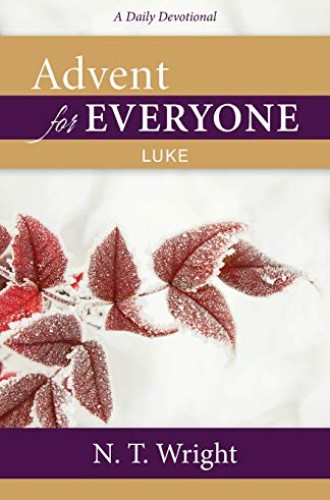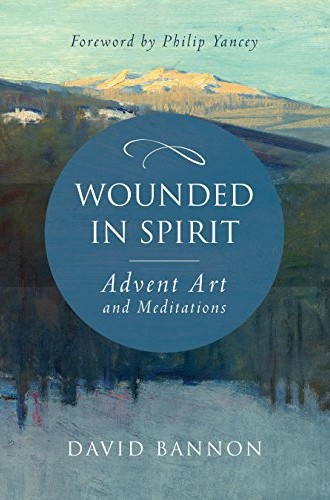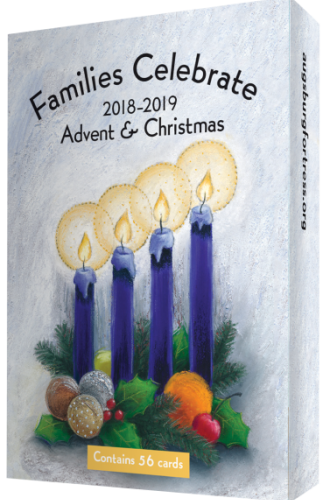What's new this Advent?
Four of the best new resources for individuals, congregations, and families
Carol Howard Merritt offers a one-page reflection for each of the days of Advent in a slim booklet that’s ideal for group use by members of congregations. The devotions, which cover Luke 1:35 to Luke 2:7, insightfully and eloquently retell each part of the story from Mary’s perspective. During her visit to Elizabeth’s house, the narrator says, “Slowly, I savored the truth, as I would eat a fig, relishing its sweet earthy taste. I was bearing God.” Later, she moves her hand protectively over her swelling stomach, musing: “His body would always be in danger. He would always be threatened, I felt. And yet, hope also kicked inside of me.” By the end of the story, Mary knows that she has borne the hope of the world, the liberator of all people. Merritt’s language is evocative and accessible. If you’re looking for a devotional to give to everyone in the congregation, this is the one. I can think of nothing more lovely than entire churches full of people this Advent viewing the world through the eyes of a thoughtful, puzzled, faithful, vulnerable first-century teenage girl.
N.T. Wright is as wise (and simultaneously pastoral) as ever in his new collection of daily reflections for the four weeks of Advent, which are based on Wright’s own translations of various stories and parables from Luke’s gospel. The devotions are written in non-academic language (“even in the present time, this new age breaks in to our sad old world”) and at the same time reflect the author’s nuanced understanding of the New Testament context. Jesus, Wright shows, was born into a society plagued by political power plays, theological divisions, shifting loyalties, and economic injustice. Discussion prompts at the end of each reflection encourage readers to connect these first-century realities with the challenges of our own day. Through Wright’s lively writing and thoughtful prompts, Luke’s questions become our questions and his good news becomes our good news.
For those who are hesitant to leap into the good news too quickly, David Bannon’s book of Advent art and reflections will be a valuable resource. “We are so accustomed to rushing through life,” says the author in the introduction. Bannon, who has a felony conviction and whose adult daughter died in 2015, has lived through the realities of failure and grief. In this book, he intersperses carefully curated photos of Christian art with his own reflections on the artists—their lives, their tragedies, and their persistent hopes. Bannon also evokes an honest grappling with grief by including brief quotations from a variety of thinkers: Carl Jung, Annie Dillard, Terence Fretheim, Isabel Allende, Elie Wiesel, Julian of Norwich, Simone Weil, N.T. Wright, and Søren Kierkegaard make appearances. Particularly evocative are the excerpts from Friedrich Rückert’s poems, which Bannon translates here into English for the first time: “Do not wrap yourself around the night, / bathe it in eternal light. / My tent is dark, the lamp is cold, / bless the light, the Joy of the World!”
Although I love almost nothing more than books, my favorite family Advent resource of the year isn’t a book. It’s a deck of cards—the size of regular playing cards—containing a card for each day of the 2018 Advent and Christmas seasons (and two cards for Sundays), along with additional cards that contain prayers and suggestions for parents. Intended for families with children aged 3-12 to use during meals, each illustrated card features a brief reflection on a character, theme, or hymn related to the seasons—from St. Lucy to Simeon, from Advent wreaths to cookie-making, from the Magnificat to “Away in a Manger.” The activities and prayers are creative and age-appropriate. “Throw an Advent ‘Joy to the world’ dance party,” one card suggests playfully. The illustrations are endearing, and the prose is sensitively written. “God, thank you for Jesus, who is beautiful and peaceful like the dark night,” proclaims the prayer for winter solstice, resisting the typical Advent imagery of darkness as something to be rejected or despised. I plan to use these cards with my children this Advent, and I’m sure our family’s dinnertime discussions will be richer because of it.










